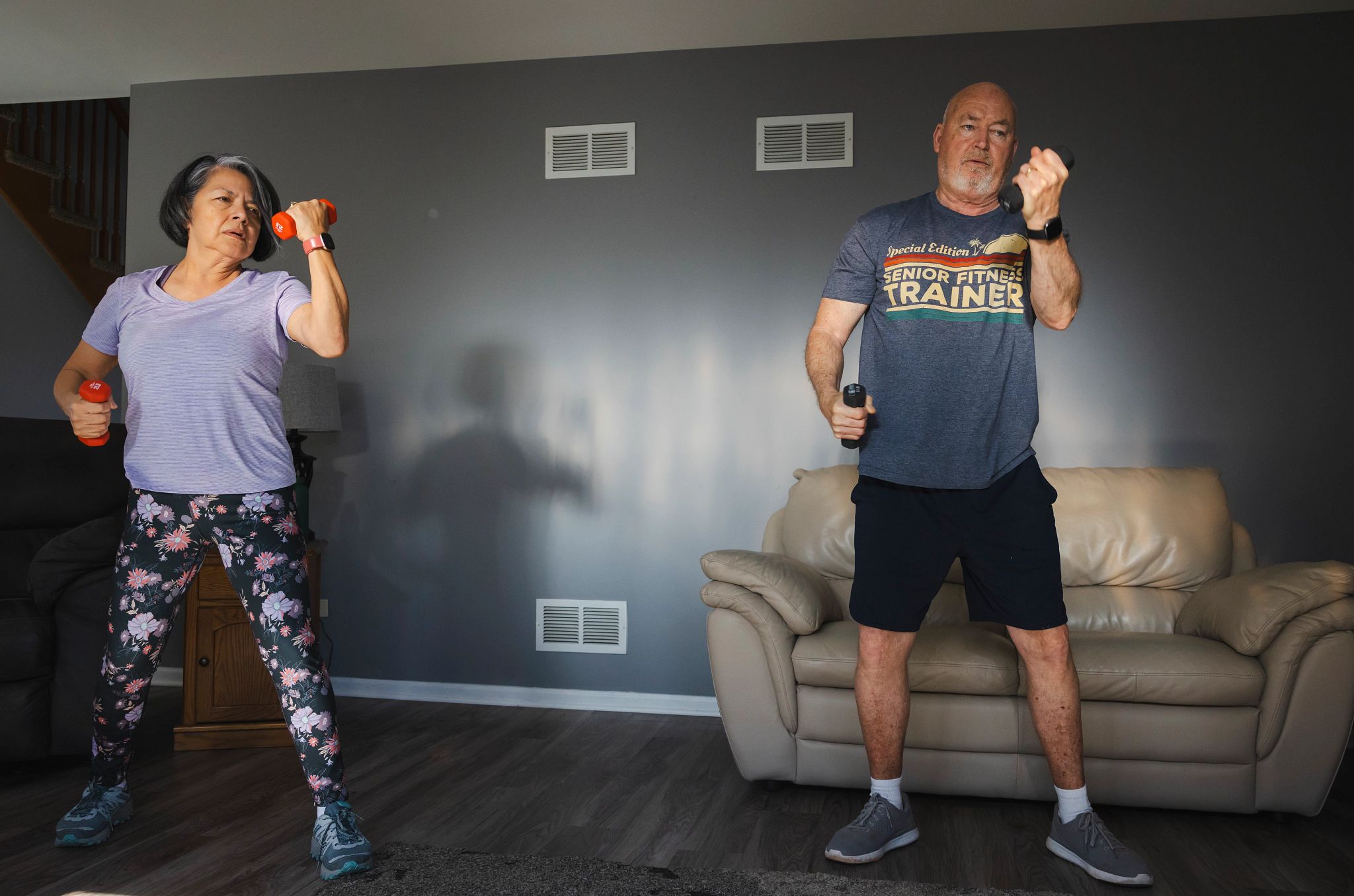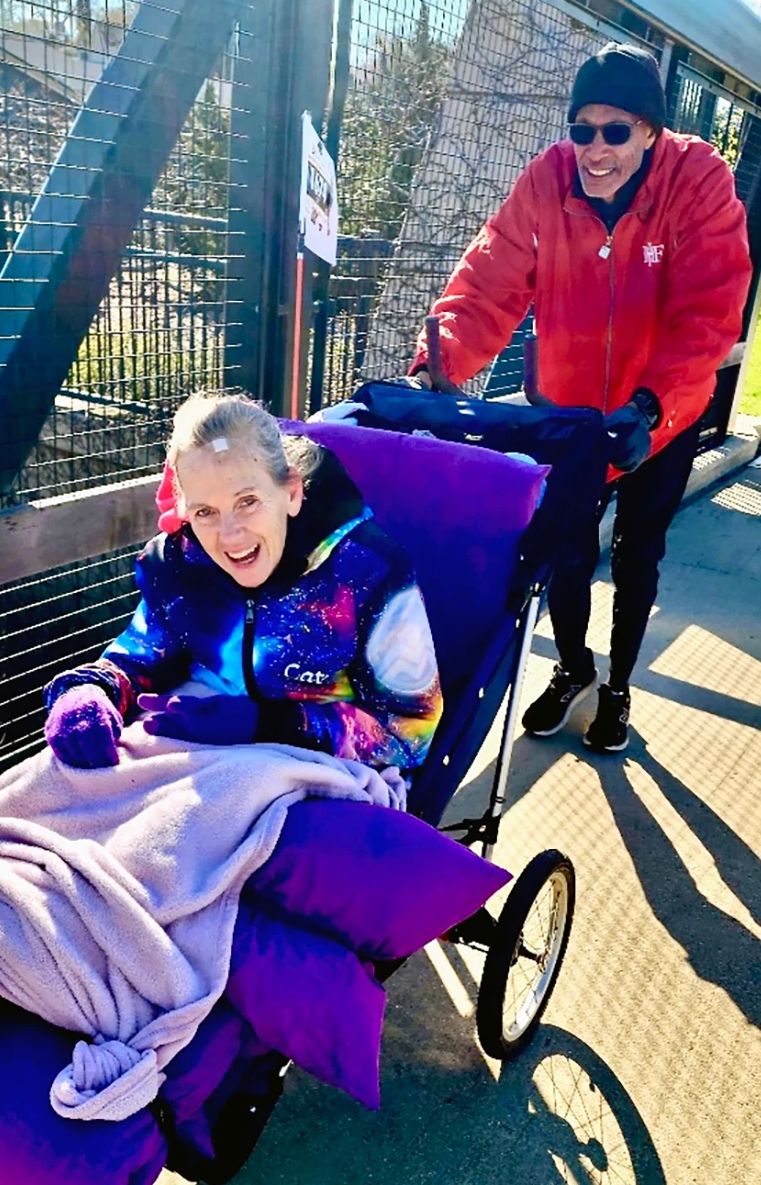AARP Hearing Center


When Catherine Popp was diagnosed with early-onset Alzheimer’s in 2014, her partner, Anthony Copeland-Parker, turned their passion for running marathons and 5Ks into a full-time caregiving strategy. Drawing from research that shows immobility accelerates health decline in patients with dementia, Copeland-Parker made movement their medicine, keeping Popp active and walking, sometimes six to 10 miles a day.
He made the unusual decision to hire health aides, not to sit and watch TV with her all day but to walk with Popp, in addition to the walking he was doing with her. Through her active daily routine, Popp has maintained her physical strength, avoided complications like bedsores and pneumonia, and exceeded her doctor’s expectations in maintaining some independence, like feeding herself.
“The natural instinct is to avoid movement out of fear of falls and injuries, but the real danger is inactivity. Once your loved one starts sitting around, it’s a quick slide from the chair to the wheelchair and then to the bed, where even more health problems begin,” says Copeland-Parker, author of Running All Over the World and another book about their journey with Alzheimer’s disease.


Eleven years after her diagnosis, Popp is still clocking nearly six miles a day but is now nonverbal. “The bond we share speaks louder than words,” Copeland-Parker says. “She still comprehends what I’m saying, and we still laugh together.”
Benefits of staying physically active
Many caregivers have stories like this one, and scientific evidence backs them up. Research shows that staying physically active can help people living with dementia, Parkinson’s disease and other neurological conditions. One review of 16 studies, published in the scientific journal The Gerontologist, found that simple exercises done at home can improve physical fitness, mood, daily function and even behavior in people with dementia. It also found that when caregivers join the activity, it can ease their stress.



































































More From AARP